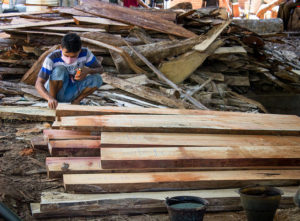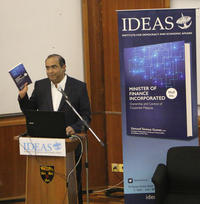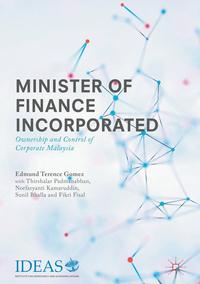
How does the complex pattern of shareholdings and subsidiaries – entangled, hierarchical and pyramidal – influence actions, decisions, policies and strategies? It could be said that the behavior of conglomerates and mega corporations is influenced by their ownership structure.
A new book, Minister of Finance Incorporated: Ownership and control of corporate Malaysia, looks at quantitative methods to decipher corporate governance, from biomass, forest and plantations to Malaysia’s corporate finance.
How the structure of commodity corporates could impact the sustainability of agricultural landscapes is of direct interest to the French Agricultural Research Centre for International Development (CIRAD), one of the CGIAR Research Program on Forests, Trees and Agroforestry’s (FTA) partner institutions.

Read more: Sustainable value chains and investments to support forest conservation and equitable development
This is because many activities linked to deforestation; forest management; the sustainability of palm oil, rubber and timber plantations; biomass and biofuel strategies are driven by the choices of international finance and mega corporations.
CIRAD’s activities concern the life sciences, social sciences and engineering sciences, applied to agriculture, the environment and territorial management. Its work centers on food security, climate change, natural resource management, the reduction of inequalities and poverty alleviation.
In particular, in Southeast Asian countries such as Malaysia and Indonesia, research by CIRAD and its public- and private-sector partners focuses on natural resource management, food security, biodiversity studies and the sustainability of tree crop-based systems, paying particular attention to island agro-ecosystems, which are particularly sensitive to climate change.

In 2010, CIRAD’s Jean-Marc Roda and his Malaysian team at Universiti Putra Malaysia started to develop methodologies aimed at deciphering corporate governance and their environmental commitments among Southeast Asian transnationals. Deciphering corporate governance and environmental commitments among Southeast Asian transnationals: Uptake of sustainability certification was subsequently published in 2015.
The paper’s coauthor Norfaryanti Kamaruddin, who also contributed to the recently launched book, previously completed a PhD that was partially supported by FTA.
An important debate on global trade and sustainability relates to the role that corporate governance has on the uptake of sustainability standards. The paper suggests that financial factors, such as ownership structure and flexibility in decision-making, may have a fundamental role in understanding the adoption of sustainable standard systems in the corporate sector. This is based on the analysis of four major Asian agribusiness transnationals comprising about 931 companies.
In addition, this paper explores as a way forward the convergence of environmental sustainability with long-term family business sustainability.
Read more: Soils, governance, big data and 99 tropical countries: Best reads in forests, trees and agroforestry

Research tools developed throughout the project proved extremely accurate for deciphering any kind of corporate financial structure. Such quantitative methods of ownership structure analysis, initially designed for the analysis of the forest and agriculture financial sectors, were successfully employed to independently confirm and illustrate previously published results from ET Gomez.
Roda and his team were able to demonstrate how a core of 26 corporations controlled the Malaysian corporate sector and to provide details on how that control spread throughout the financial network, leading to the chapter “Understanding the network typology of the seven government-linked investment companies (GLICs)”.
The book was launched by the Institute for Democracy and Economic Affairs (IDEAS) in August 2017. It covers all Malaysian financial sectors, with Chapter 4 focusing on the plantation sector and on quantitative methods used for comparison and validation.
Adapted from the article by Jean-Marc Roda, originally published by CIRAD.
This work is linked to the CGIAR Research Program on Forests, Trees and Agroforestry (FTA), which is supported by CGIAR Fund Donors.











